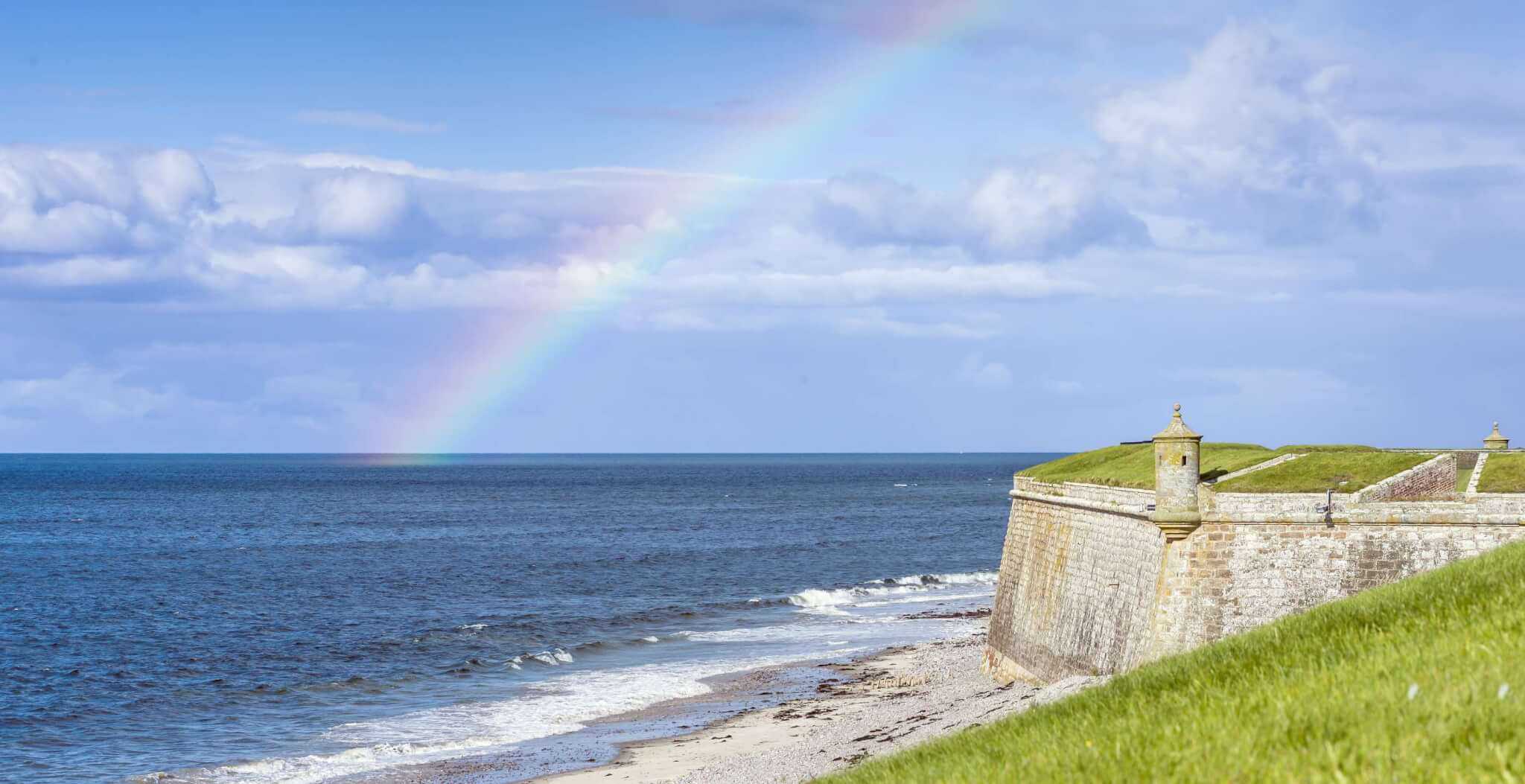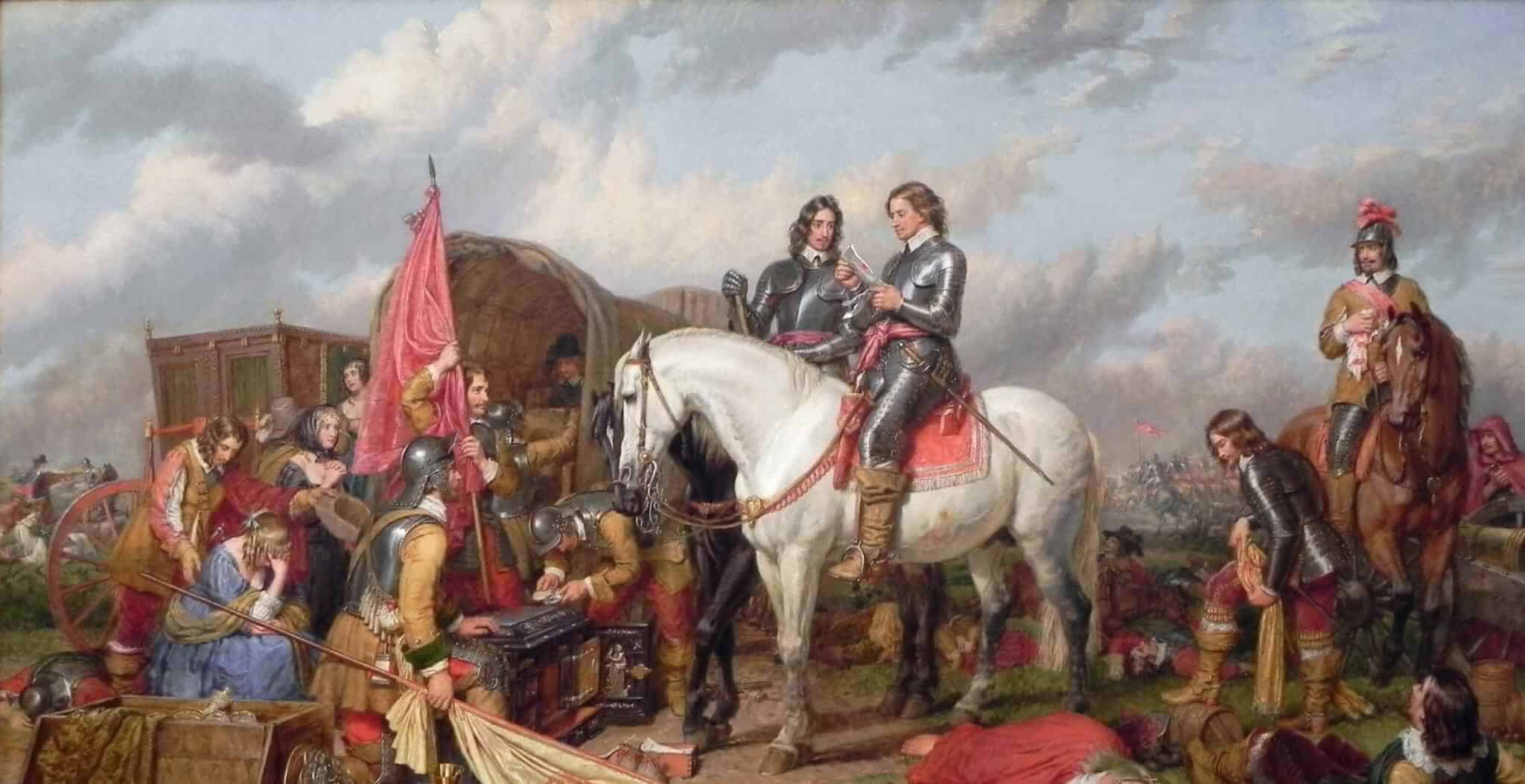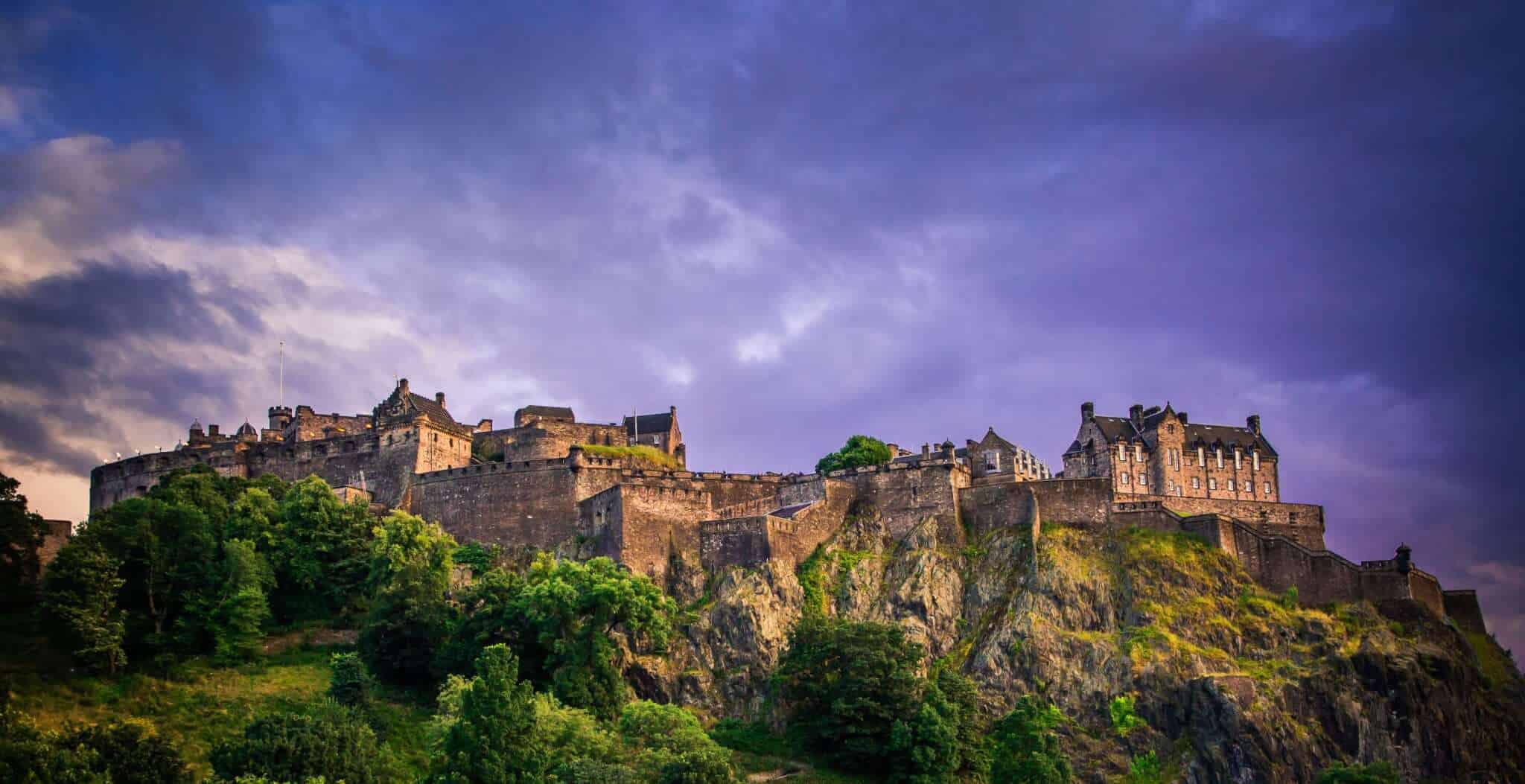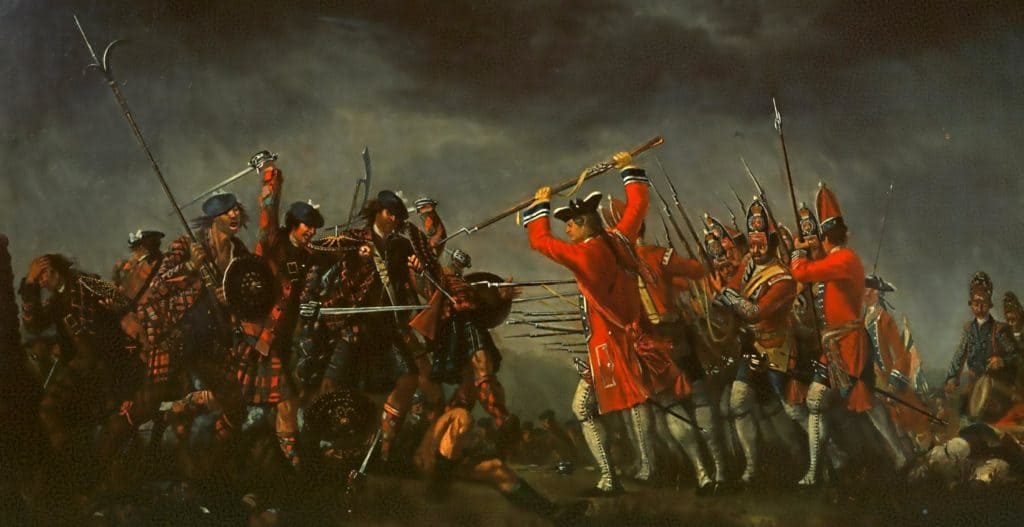The three forts of Fort George, Fort Augustus and Fort William, span the Great Glen of Albyn, which cuts the Scottish Highlands in two from coast to coast. The Great Glen has provided a natural highway for east to west communications from the earliest of times. The forts however were built by the government to pacify the Highlands during the period of Jacobite unrest and the subsequent rebellions which followed, between the late 1600’s to the mid 1700’s.
Following the Union of the Crowns of Scotland and England in 1603, there remained significant support for the Stuart monarchy in Scotland. Supporters of the exiled Stuart kings came to be known as Jacobites, from the Latin ‘Jacobus’ or James, the traditional first name of the Stuart kings. Jacobite unrest started almost immediately the Catholic James VII of Scotland, and II of England, had fled to France in 1688 to seek the protection of Louis XIV.
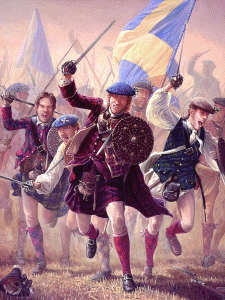 Fort William, which lies at the western end of the Great Glen, was the first of the forts to be built, constructed in stone around 1698. It withstood a siege during the Jacobite rebellion of 1745 and was subsequently used as the base for the hunt of Bonnie Prince Charlie. Little remains of the fort today as the town’s railway station was built upon the original site. Perhaps not the prettiest of towns, Fort William is now one of the Scotland’s main tourist centres and the West Highland Museum contains some excellent examples of Jacobite memorabilia. The areas surrounding Fort William however can only be described as stunning. From the snow topped towering mass of Ben Nevis to the classic, and the much filmed, great Glen Nevis, featured in both Rob Roy and Braveheart.
Fort William, which lies at the western end of the Great Glen, was the first of the forts to be built, constructed in stone around 1698. It withstood a siege during the Jacobite rebellion of 1745 and was subsequently used as the base for the hunt of Bonnie Prince Charlie. Little remains of the fort today as the town’s railway station was built upon the original site. Perhaps not the prettiest of towns, Fort William is now one of the Scotland’s main tourist centres and the West Highland Museum contains some excellent examples of Jacobite memorabilia. The areas surrounding Fort William however can only be described as stunning. From the snow topped towering mass of Ben Nevis to the classic, and the much filmed, great Glen Nevis, featured in both Rob Roy and Braveheart.
At the scenic southern end of Loch Ness now stands the village of Fort Augustus. Today, little remains of the original fort of that name as its parts were used in the construction of the Benedictine Abbey in 1876. The Abbey buildings still exist, however its community of monks left in 1998. Fort Augustus was built after the 1715 Jacobite uprising and was named after one of King George II sons, William Augustus. Ironically, it was that self same son who returned to the fort named after him thirty years later, and proceeded to destroy the entire ancient Highland clan system following his victory at the Battle of Culloden. Better known as the Duke of Cumberland, his brutal repression of the Highlanders earned him the nickname of ‘Butcher’.
Following the 1745 rebellion, the government ordered the construction of the massive Fort George, which stands proudly on a spit of land at the entrance of the Moray Firth, just 11 miles north-east of Inverness. It was the last of the three forts to be built and was eventually completed in 1769, by which time the Highlands were relatively peaceful. The fort was kept in use as a military barracks, as it is to this day, and remains virtually unchanged. Probably the finest remaining example of artillery fortification in Europe, the one mile of ramparts and the 42 acres they enclose, just have to be walked to be fully appreciated. Whilst on the ramparts keep a keen watch for the 100 or so bottlenose dolphins that call the Moray Firth home. Currently in the care of Historic Scotland.
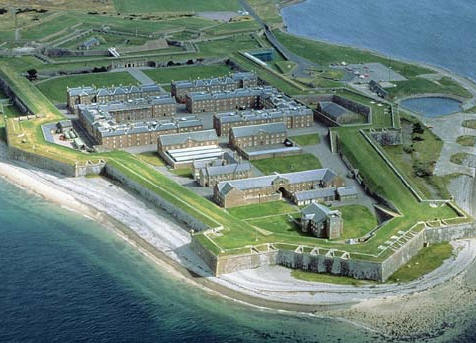
The more energetic traveller can now enjoy the above sights at their own speed, with the opening of the 73 mile long Great Glen Way in 2002. This long distance footpath spans the Great Glen of Albyn from Inverness to Fort William, running along the banks of Loch Ness and towpaths of the Caledonian Canal.
How to get here:
Fort George: 11m NE of Inverness near the village of Ardersier on the B9006. Signposted from the A96 at the Gollanfield Junction
Fort Augustus: Fort Augustus is located on the A82, 33 miles from Fort William and 34 miles from Inverness.
Fort William: 65 miles south-west of Inverness, 105 miles north of Glasgow, 145 miles from Edinburgh (approx. 3 hours drive), 50 miles north of Oban
Castles in Scotland: Please follow the following link to view our interactive map showing the location of more than 100 Castles in Scotland.
